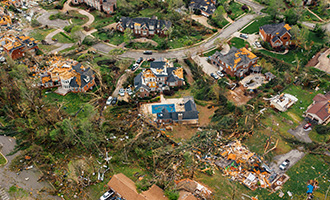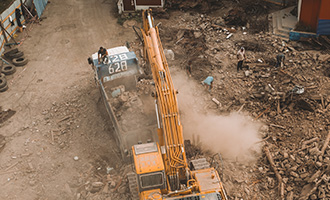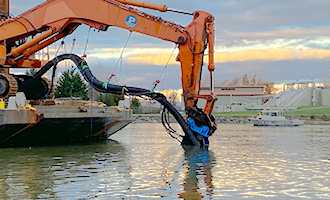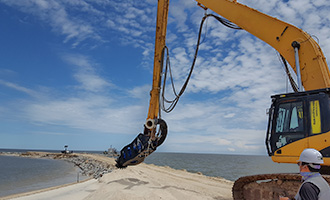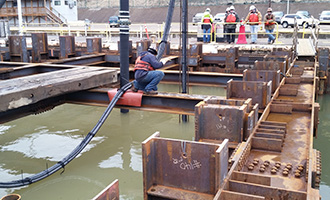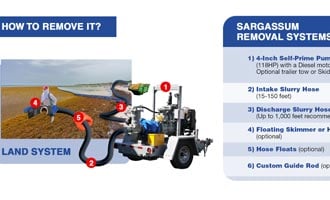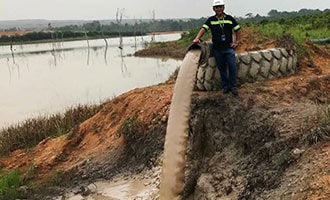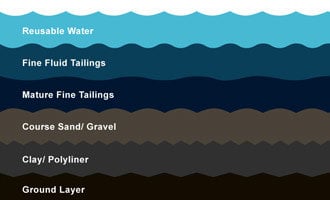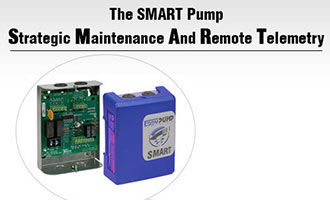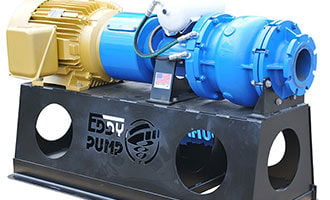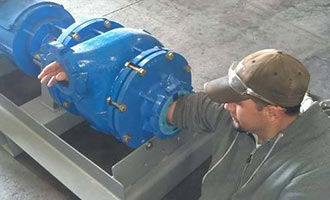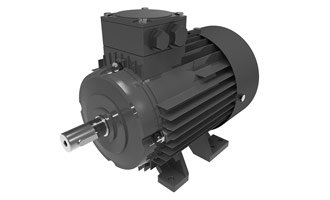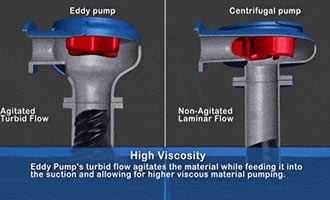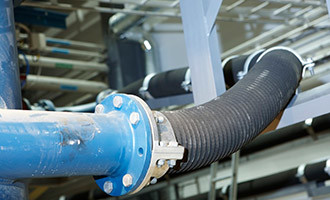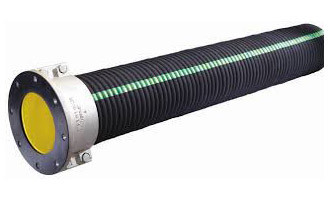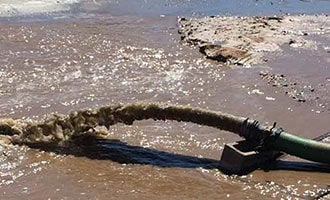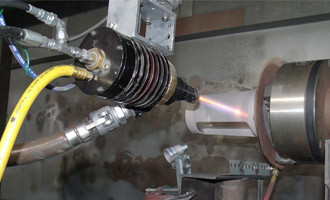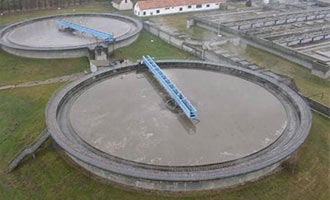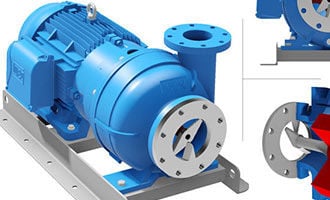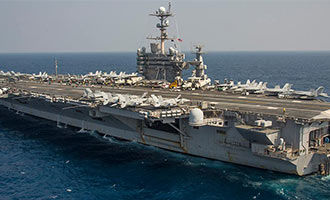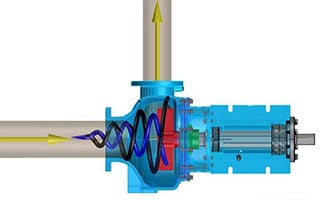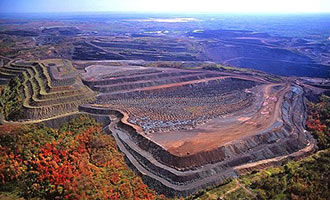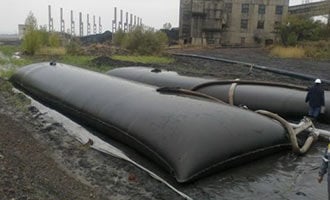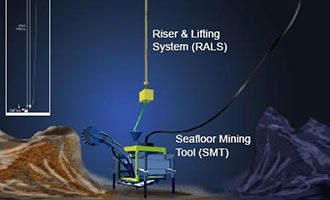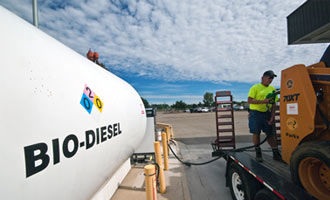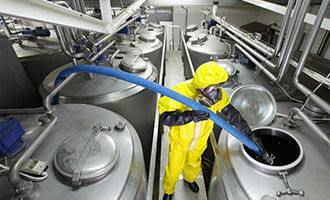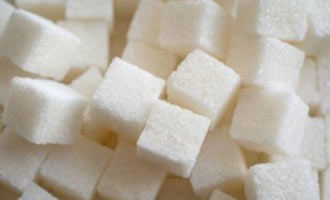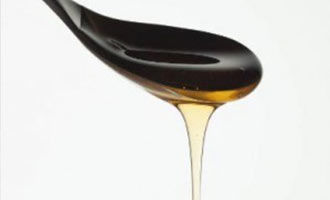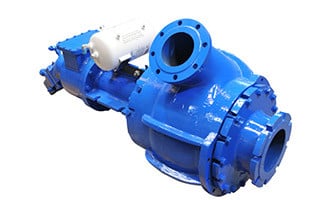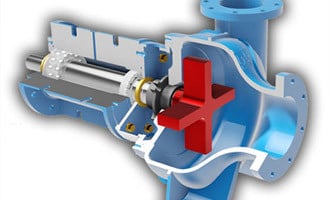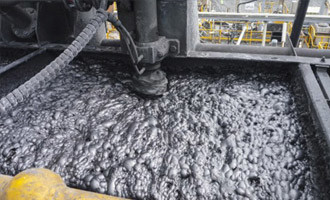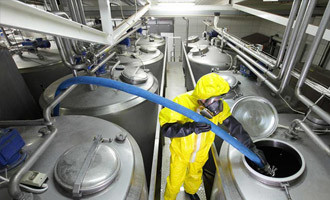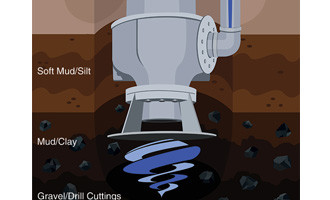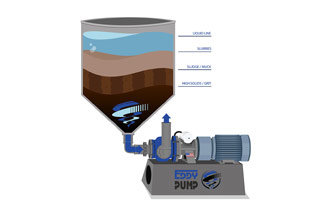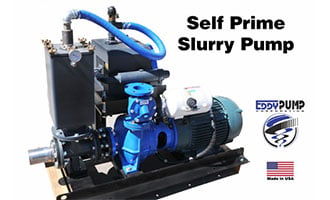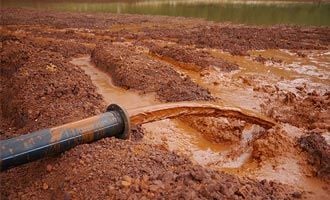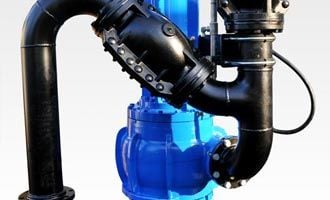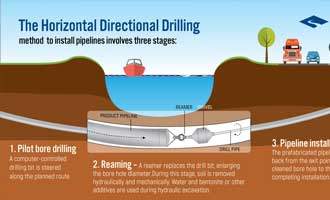Hurricane Dredging Restoration
When used properly, hurricane dredging restoration procedures can help to restore and even transform coastal or waterfront regions, rescuing communities and even safeguarding them in the future. Read on to discover more about how this works. Browse Our Slurry PumpsContact Us For a Fast QuoteEDDY Pump has many decades of experience providing industrial dredge products to countless industries and companies worldwide. Many of the companies that EDDY Pump provides its world-leading industrial pumps and equipment, and dredge pumps to, are looking for a strategic advantage against their competition. With this being said, EDDY Pump understands the advantages customers can experience with renting industrial pumping equipment instead of buying it. That is why EDDY Pump chooses to provide customers the option of renting or rent-to-buy when a lot of other companies force their customers to make an expensive purchase which can limit the financial resources they have for funding other areas of their business!
This Article Includes
- What is Post-Hurricane Dredging?
- The Advantages of Post-Hurricane Dredging
- A Critical Aspect of Hurricane Defense
However, there is still more work to be done after the initial cleanup. Communities and ecosystems need to be effectively restored following a hurricane, and — perhaps most importantly of all — steps need to be taken to protect vulnerable locations from potential damage and destruction in the future. By utilizing certain techniques and processes, we can achieve these far-reaching aims.
Post-hurricane dredging is one of these vital processes. When used properly, dredging procedures can help to restore and even transform coastal or waterfront regions, rescuing communities and even safeguarding them in the future. Read on to discover more about how this works.
What Is Post-Hurricane Dredging?
Post-hurricane dredging simply refers to the removal of displaced materials from the ocean or along the coast after a major storm. During a storm, wind and water is propelled at immense speeds and with great power, creating destruction on a broad scale. Not only do hurricanes destroy coastal areas, but they also drag rubble and debris from one location to another, causing chaos and disruption. Dredging removes this debris and takes it away for processing.
Often, hydraulic dredging is used following a hurricane. Hydraulic dredging essentially means pumping hurricane debris and remnants from one location to another, where it can either be processed or redeployed elsewhere. Before it can be pumped using the hydraulic process, the debris is pulverized into a slurry so that it can be transported via the hydraulic system. This involves breaking down large solid pieces within the debris and mixing these pieces with water in a process called liquefaction. The slurry behaves like a liquid, although it still contains solid pieces, so the debris can be moved easily to a sorting area ready for processing.
Removing Hazardous Materials
Hurricanes are powerful things, and they tend to carry a great deal of material from one place and deposit it somewhere else. We see the effects of this on land, when large objects are ripped from one location and hurled to a new location, but this also happens at sea.
Unfortunately, this can cause a severe risk to public and environmental health. Let’s take sewage as an example — a thoroughly unpleasant material, not to mention a highly dangerous one. If a hurricane severs a sewage system, where does this sewage go? It is released into the surrounding environment and may be picked up and spread around by the hurricane winds.
The sewage could end up in the sea where it may remain, causing a danger to local flora and fauna and damaging ecosystems. Alternatively, sewage could become swept up in flooding and end up in local residential communities. Once here, it could cause disease and illness, and even death in some extreme cases.
Hazardous materials such as sewage need to be removed from the local water table and from oceans, rivers, and lakes. This is where post-hurricane dredging can make a big difference in keeping communities and local wildlife safe from harm.
Try Before You Buy
Another great benefit to renting is that you get a chance to try out the equipment and the brand, and then if you feel like buying that specific piece of equipment you can move forward and make the purchase. Trying-out equipment gives you confidence that you are making the right purchase decision. This can be of great value considering how expensive new equipment can be. Trying before you buy can lead to a lot more sleep-filled nights because you do not have to worry whether or not you purchased the right equipment for the job.
Restoring Beaches and Dune Habitats
Restorative post-hurricane dredging is not only about restoring the harbor and port infrastructure that supports the maritime economy. The benefits of the process are far more profound than this. Dredging can be used to restore and recreate the critical habitats that bind our coastal ecosystems together — habitats that are all too often left exposed to damage and destruction during storms.
A dredging program can help to recreate dunes of sand that characterize beach landscape. These dunes of sand form hills and ridges, acting as corridors for terrestrial animals as they access food sources and shelters. The dunes also create pools, marshes, and other areas of wetland when the tide comes in and fills hollows with water — these marshy coastal habitats are filled with an incredible diversity of wildlife and must be preserved.
In time, grasses and other forms of flora begin to form on the dune systems, further bolstering the ecosystems in the area. All of this could be destroyed, permanently, in the event of a major storm or hurricane, which makes post-hurricane dredging so critical to the ongoing viability of coastal life.
Avoiding Maintenance Costs
The cost of maintaining equipment that a business has already purchased is something that is very difficult to factor into a company’s budget. This is because when equipment fails it happens a lot of times without warning. This can severely affect working capital and reduce the number of projects and jobs a company can complete annually.
Renting allows a business to avoid the cost of maintenance which can save you thousands of dollars over a given period of time. Having to do maintenance on equipment can require your business to hire a mechanic that has the skills of conducting the mechanical work. Some businesses might have to hire more than one machine if the quantity of equipment to be maintained is beyond what one mechanic can accomplish. Renting is a great way to avoid maintenance costs and all the other headaches that come with owning a large volume of equipment.
Building Effective Protections Against Future Hurricane Events
When we think about post-hurricane dredging restoration, it’s tempting to think exclusively of restorative and retroactive processes. A hurricane strikes and then the dredging process is implemented to restore the area to its prior state. In other words, dredging is a reactive response to the hurricane problem.
However, this only tells part of the story. When deployed correctly, post-hurricane dredging can be a real protection against future storm damage. This is because dredging brings the material up from the floor of the sea or ocean and deposits this material in a new location — effectively a type of geoforming, or manually manipulating the shape and form of the earth beneath our feet.
As we create these artificial deposits of relocated land, we are making barriers against high winds and high seas. These barriers can protect other areas of the coastline from the harm caused by storms.
Depreciation and Taxes on Equipment
When a company rents equipment and dredge pumps they reduce their tax burden because renting results in a deductible expense. When purchasing equipment it must be either depreciated over the lifetime of the equipment and in some cases can only be depreciated once in the year it was purchased. In both of these scenarios, renting vs. buying, it is very easy to see that renting can be the ideal choice, especially for smaller to medium-sized businesses where gaining the greatest return on every dollar spent is crucial. Every time a company rents industrial equipment it is a tax deduction, and the timing of the purchase does not need to correspond with a specific tax year.
Putting Your Business Ahead of the Competition
Any business that wants to compete at a higher level for the sake of generating more revenue or improving its market position must find creative ways to stay ahead of the competition. Staying ahead of the competition can be even more challenging for companies that have strained or exhausted their financial resources, or are smaller in size than the other businesses they are competing with.
Renting instead of purchasing industrial equipment and dredge equipment can be a very effective way of leveraging creativity for the sake of continuously positioning your company ahead of other companies. There are many benefits to not committing to a purchase, and instead choosing to rent the equipment that allows your company to secure new projects and generate greater revenue; this can also extend into increasing profits. Renting can equate to pushing your business to financial heights that you only dreamed about previously!
The EDDY Pump Corporation
The EDDY Pump Corporation is a world-leading provider of unique slurry and dredge pumps, and manufactures products that provide superior value versus other pump types. The pump is not a centrifugal, vortex, or positive displacement pump, but rather a pump harnessing the fluid dynamics of an eddy current. This enables the EDDY pump to outperform conventional pumps in applications that involve high viscosity, large weight of solids and particulates, high specific gravity, corrosive and abrasive material, work well in applications that are susceptible to clogging, and do it in an environmentally friendly manner.
EDDY Pump Product Categories
- Self Priming Pumps
- Industrial Heavy-Duty Slurry Pumps
- Dredging Equipment
- Excavator Pump Attachment
- Dredge Sled
- Autonomous Dredge
- Cable Deployed Dredge
- Hydraulic Power Units (HPU)
If you are pumping slurry, brines, high solids, extremely viscous material, paste, high abrasives (sand & gravel) and material filled with solids, then you found the best suited pump for the job. Go to: https://eddypump.com/ or Call Us!
Mining, Fly Ash, Coal Ash, Oil, Fracking, Gas, Wastewater, Pulp and Paper, Chemical, Energy, Water Municipalities, Irrigation, and Dredging Companies. For Access to Complete Product Line Go to: https://eddypump.com/products/
Related Products
HD (Heavy Duty) Slurry Pumps
EDDY Pump vs. Centrifugal Pumps
How EDDY Dredge Pumps Work Vs. Centrifugal pumps. EDDY Pump technology explained. Learn more about EDDY Pump Technology.
Why EDDY Pumps Are Better - Highlights
This video shows how EDDY Pump transports high slurry and abrasive materials. Featured dredge pump equipment includes the Remote Operated Subdredge, Diver Operated Pump and a Excavator Attachment Dredge Pump.



